Everything You Need to Know About Senior Eye Problems
Article at a glance
Eye diseases are a common problem affecting seniors (almost 2.9 million in the U.S.)
Eye problems are fairly common amongst adults, and some can be treated or prevented.
Eye diseases can result in difficulty seeing, partial vision loss, or permanent blindness if not treated early on.
It’s important to discuss with an eye doctor/healthcare provider the risk factors and benefits associated with specific treatments, such as laser eye surgery.
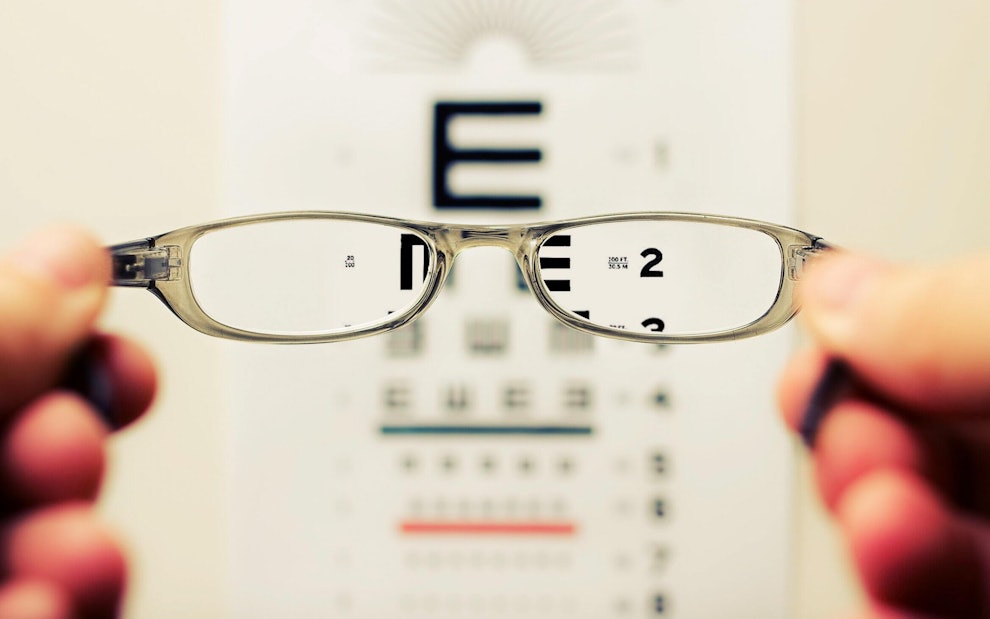
How Common Are Eye Problems for Seniors?
Unfortunately, eye problems and visual impairment are all too common amongst seniors. According to the CDC, vision impairment affects almost 2.9 million adults in the U.S. alone. The reasons for this can vary, but most commonly, eye problems are a result of:
aging
a family history of diseases/eye problems
eye injuries (which can result from falls)
chronic health illnesses (such as diabetes)
Despite being a common occurrence, eye issues and vision loss are not an automatic guarantee for older adults, and proactive measures can be taken ahead of time to help reduce those chances.

Types of Eye Diseases Seniors Experience
There are multiple types of eye diseases a person can experience, but there are certain problems that are more common amongst seniors such as dry eye syndrome, glaucoma, cataracts, and more.
Dry Eye Syndrome
Dry eye syndrome is when the eyes fail to produce enough moisture or tears, leading to serious discomfort.
Causes of Dry Eye Syndrome
Some potential causes of dry eye can include:
The inability to make enough tears to moisturize the eye usually due to an ineffective gland
Tears drying up too quickly
Tears that are produced don’t provide enough moisture to keep the eyes wet
Blocked tear duct
Dry Eye Syndrome Symptoms
According to the National Eye Institute, symptoms of dry eye syndrome include:
A scratchy feeling, like there’s something in your eye
Stinging or burning sensations in your eye
Red eyes
Sensitivity to light
Blurry vision
In some cases, watery eyes
Treatments for Dry Eye Syndrome
To help treat dry eye, there are a few different possibilities:
Eye Drops: Over-the-counter eye drops may help dry eye irritation.
Prescription Eye Drops/Medications: If over-the-counter eye drops aren’t enough, a prescription drop may be necessary.
Lifestyle Changes: actions such as quitting smoking, drinking more water, and wearing sunglasses outdoors may help reduce the severity of dry eye.
Surgery: in more severe cases, surgery may be required to rectify the issue.
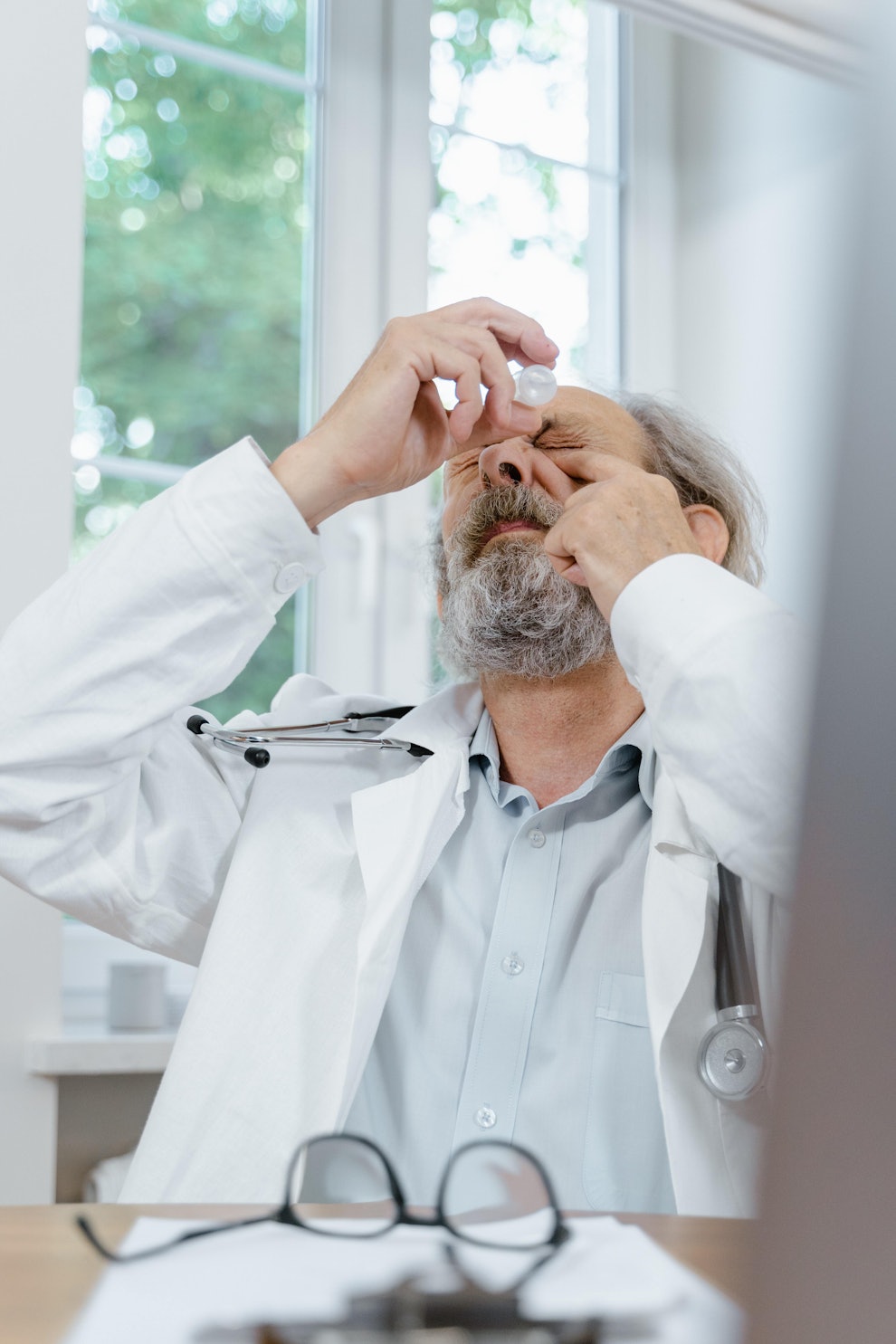
Floaters
Floaters are small, dark shapes that appear to “float” across your vision. Sometimes they can look like squiggly lines, spots, or even cobwebs.
Causes of Floaters
In general, floaters are often a common effect of changes in the eye due to age. The gel-like substance in the eye known as vitreous can stick together, creating shadows—or floaters— that appear in your vision. However, in some cases, floaters could potentially be linked to a more severe eye disease, such as eye infection or retinal detachment.
Symptoms of Floaters
Aside from seeing the dark lines or shapes in your vision, floaters tend to move with the eye. If a person attempts to look directly at them, they may appear to move away. This may become more noticeable when looking at bright lights.
Treatments for Floaters
Treatments can vary depending on the cause of the floaters. Possible treatments include:
Diagnosing the Root Cause: if the floaters are appearing due to another eye disease, then treatment should focus on that eye disease.
Vitrectomy: if floaters aren’t connected to another eye disease and are shown to impede a person’s day-to-day life, an eye physician may suggest undergoing a surgery called vitrectomy that involves removing the vitreous in the eye, which as a result can remove floaters. It’s essential to weigh the risks and benefits and speak to your healthcare provider before making any decisions.
No Treatment: if the floaters aren’t particularly bothering a person nor connected to a more severe eye disease, treatment may not be necessary.
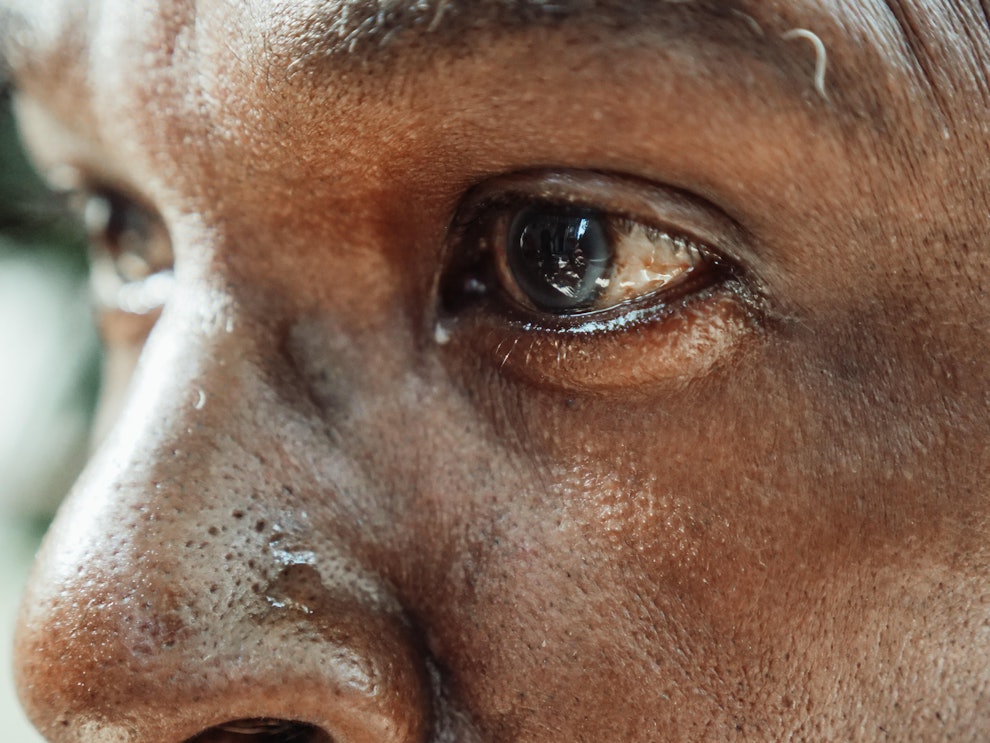
Age-Related Macular Degeneration
Age-Related Macular Degeneration (AMD) is one of the leading causes of vision loss in older adults. AMD is an age-related eye disease due to aging that causes damage to the macula—the part of the eye that controls straight-ahead vision. As a result, a person may experience distorted central vision or central vision loss.
AMD Risk Factors
Common risk factors for developing AMD include, but are not limited to:
- Age: as a person ages, they become more susceptible to AMD.
- Family medical history: if your family has a history of AMD, you are more likely to develop it.
- Cardiovascular risk factors: if you’re at risk of developing heart conditions due to high blood pressure (hypertension) or from smoking cigarettes, you are more likely to develop AMD.
Types of AMD
There are two types of AMD: Wet Macular Degeneration and Dray Macular Degeneration.
Wet Macular Degeneration: a rare type of late-stage AMD that results from abnormal blood vessels that grow and damage the macula.
Dry Macular Degeneration: the most common form of AMD results in the macula thinning out due to age. Dry AMD happens in stages—early, intermediate, and late.
Symptoms of AMD
Symptoms of AMD largely depend on the type and stage of the disease.
- Early stages of AMD do not show any symptoms.
- Intermediate stages may not result in symptoms, but some people may experience some blurriness in their vision or trouble seeing/reading in lower light settings.
- Late stages of AMD usually involve the appearance of straight lines looking crooked or wavy, as well as blurriness in their central vision (or distorted vision). Seeing in low light may also be challenging.
Treatments for AMD
Regarding any stage of Dry AMD, there is currently no treatment option available.
For Wet AMD, there are currently two treatments that can help prevent further vision loss:
- Injections: Anti-VEGF drugs, which an eye doctor injects into the eye.
- Photodynamic Therapy (PDT): a combination of laser treatment and injections.
Additionally, if a person is only experiencing AMD in one eye, steps can be taken to reduce its chances in both eyes. Healthcare providers may advise lifestyle changes, like quitting smoking, diet changes, or prescribing special vitamins to help reduce the chances of stage progression.

Glaucoma Types, Symptoms & Treatment
Glaucoma
Glaucoma is a type of eye disease that damages the eye’s optic nerve and can result in blindness and vision impairment.
Types of Glaucoma
There are several different types of glaucoma that are divided up into primary and secondary categories. The most common types of glaucoma include:
Open-angle glaucoma: this is the most common type of glaucoma, potentially caused by unusual pressure build-up in the eye.
Normal-tension glaucoma: another type of open-angle glaucoma, usually found in people with normal eye pressure.
Angle-closure glaucoma: type of glaucoma that happens when the outer edge of the iris presents fluid from draining out of the front of the eye. This type of glaucoma is considered a medical emergency, and a healthcare physician should be contacted right away if a person experiences an onset of sudden symptoms like red eye, blurriness, nausea, and severe eye pain.
Symptoms of Glaucoma
Initially, glaucoma often doesn’t show obvious symptoms. However, over time a person may experience:
Peripheral vision loss
Overall vision loss/reduced vision
If left untreated, blindness
In more severe cases of glaucoma, a person may experience:
Severe eye pain
Nausea/vomiting
Intense headaches
Red-eye
Treatments for Glaucoma
There are a few different treatments for glaucoma, depending on the type and stage, and all aim to lower the pressure built up in the eye. Some treatments include:
Medicated Eye Drops: These eye drops are prescribed by your doctor or healthcare provider and help remove pressure in the eye to help prevent further optic nerve damage.
Laser Eye Treatment: If eye drops aren’t enough, your eye doctor may recommend a laser eye treatment that can be done in-office, which also helps relieve pressure in your eye.
Surgery: If eye drops or laser eye treatments aren’t effective, surgery may be a necessary option to drain fluid from the eye.
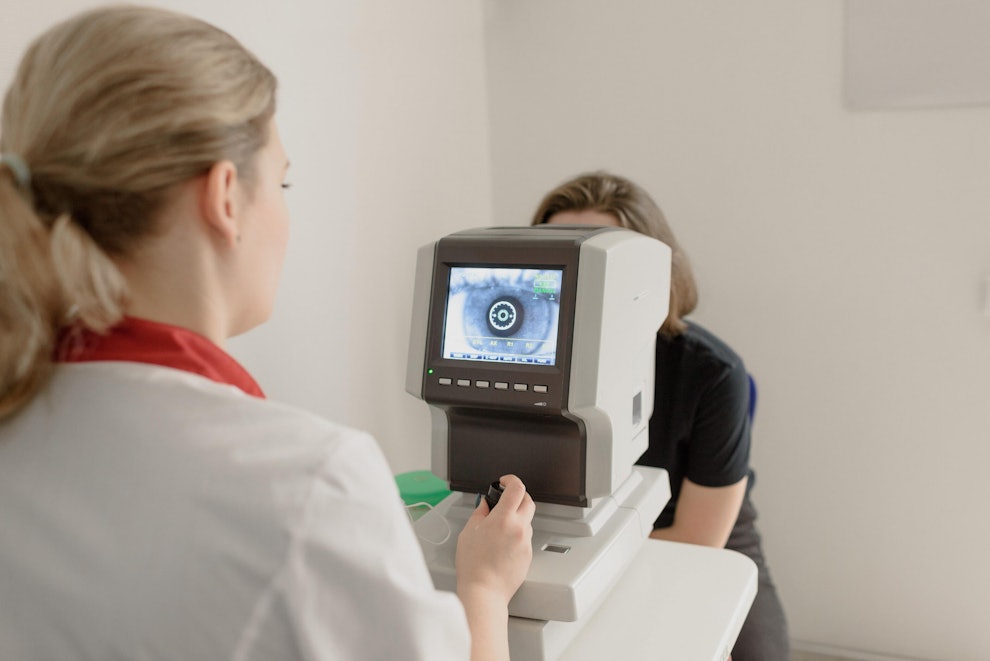
Cataracts
Cataracts are cloudy spots in the lens of the eye, or clouded lens. It’s common for people to experience cataracts as they age.
Causes of Cataracts
Cataracts are a side effect of normal aging. Typically when a person turns 40, the proteins in their eyes start to break down and bond or clump together, which looks like cloudy spots in their eyes. These can become larger and more noticeable as a person ages.
Symptoms of Cataracts
Symptoms of cataracts include:
Blurred vision
Double vision
Appearance of colors looking faded
Unable to see well at night/in lower light
Seeing a “halo” around lights
Treatments for Cataracts
If a person notices cataracts early on, they may be able to make small changes to help manage them, such as:
using brighter lighting
wearing anti-glare sunglasses
use a magnifying glass when reading or performing similar activities
getting new glasses/new prescription
If cataracts worsen to affect day-to-day life, a physician may recommend undergoing cataract surgery, which involves removing the clouded lens in the eye and replacing it with a new one.

Retinal Detachment
Retinal detachment is an eye disease that results from the retina being detached from its usual place within the eye. Separation of the inner and outer layers of the retina can also be a sign of retinal detachment.
Causes of Retinal Detachment
Most commonly, retinal detachment is caused by age or some form of eye injury. In some cases, retinal detachment can result as an aftereffect of eye surgery meant to treat another eye disease.
Symptoms of Retinal Detachment
Symptoms of retinal detachment include:
Sudden increase in floaters, more so than usual
Seeing flashes of light in one or both eyes
A dark shadow appears either on the sides or the center of a person’s vision.
Note: Retinal detachment is considered a medical emergency. If you experience sudden symptoms, it’s important to immediately go to the emergency room or eye doctor.
Treatments for Retinal Detachment
Depending on the severity of the detachment, treatments can vary. Possible treatments include:
Cryopexy (freeze treatment), followed by laser surgery: for small tears or less severe detachment. An eye doctor can likely freeze the holes or tears and then seal them with a laser treatment.
Surgery: if the retinal detachment is severe, a person may have to undergo surgery to move the retina back to its original position.
Diabetic Retinopathy
Diabetic retinopathy is an eye disease that leads to vision loss or blindness in people who have diabetes. The disease targets blood vessels in the back of the eye, leading to vision damage.
Causes of Diabetic Retinopathy
The leading cause of diabetic retinopathy is due to high blood sugar as a result of diabetes. Diabetes affects blood vessels in all parts of the body, including the eyes. Too much sugar intake can damage your retina, including the possibility of permanent vision loss.
Symptoms of Diabetic Retinopathy
Early stages of diabetic retinopathy don’t typically present any symptoms.
If it progresses, some people may experience changes in vision (such as farsightedness or difficulty reading).
In later stages, a person may notice intense dark spots that look like cobwebs. These are a result of blood vessels bleeding into the virtuous gel of the eye and should be checked immediately.
Treatments for Diabetic Retinopathy
There are a few treatment options for diabetic retinopathy, depending on the severity of the disease. They include:
Injections: anti-VEGF drugs can be injected to help slow down diabetic retinopathy before it worsens.
Laser Treatment: laser treatments can be implemented to reduce the swelling of the retina, which can help prevent too much pressure on blood vessels in the eye.
Eye Surgery: An eye doctor may recommend undergoing a vitrectomy if a person develops severe scarring or increased bleeding in the retina to help manage the issue.
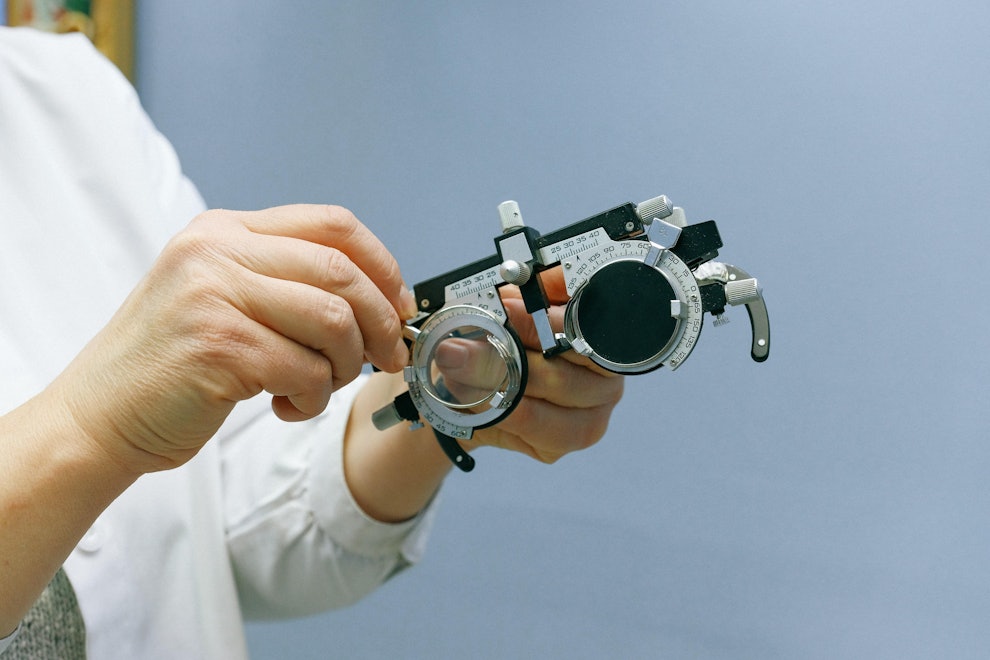
Low Vision
Low vision is an eye problem that causes difficulty or inability to see well and can result due to several circumstances.
Causes of Low Vision
Low vision is often the result of different eye diseases, such as:
Age-related macular degeneration
Glaucoma
Cataracts
Diabetic retinopathy
While low vision is most common amongst older adults, aging alone doesn’t cause low vision. It’s usually a side effect of another eye disease.
Symptoms of Low Vision
Some signs of low vision include:
inability to read
difficulty seeing while driving
inability to recognize people’s faces
struggling to differentiate between colors
Treatments for Low Vision
Typically, there isn’t a specific treatment to target low vision, as it’s often permanent. However, in the early stages, an eye doctor will likely focus on treating the specific eye disease that caused the low vision.
Additionally, while there isn’t a treatment to reverse low vision, a person can still obtain a better eyeglass/contact lenses prescription, obtaining low vision aids (such as telescopic glasses), medication, or surgery can help at least maintain the remaining vision available.
Prevention
Prevention for eye diseases in seniors can vary depending on the condition, but several preventative measures can be applied regarding any of the eye problems in general, including:
wearing sunglasses when outdoors
quitting/not starting smoking
get regular eye exams/schedule a dilated eye exam
manage other diseases, such as diabetes
eat healthy/remain active
avoid eye injuries
look into the family history of eye diseases to be aware of early detection
get treatment immediately to prevent worsening conditions if early symptoms of eye disease are suspected

When To Speak to a Healthcare Professional
In some cases, a person may not realize they have an eye issue or think it’s harmless and won’t seek treatment. So when should a healthcare professional be involved?
You should see a healthcare professional/eye doctor if:
Symptoms that seemed mild before, such as floaters, suddenly appear to become worse
You are experiencing new symptoms, even if you believe they are mild
If your vision seems to slowly worsen, especially if it begins to affect your quality of everyday life.
Note: If you experience severe pain in your eyes, rapidly developing unexpected symptoms, or experiencing sudden vision loss, seek treatment immediately from the emergency room.
FAQ
What are the four most common eye problems seniors deal with as they age?
The four most common eye problems that appear as we age include, age-related macular degeneration (AMD), diabetic retinopathy, glaucoma, and cataracts.
Sources
- https://www.nei.nih.gov/learn-about-eye-health/eye-conditions-and-diseases/dry-eye
- https://www.nei.nih.gov/
- https://www.nei.nih.gov/learn-about-eye-health/eye-conditions-and-diseases/retinal-detachment/vitrectomy
- https://www.nei.nih.gov/learn-about-eye-health/eye-conditions-and-diseases/floaters
- https://www.nei.nih.gov/learn-about-eye-health/eye-conditions-and-diseases/age-related-macular-degeneration
- https://www.nei.nih.gov/learn-about-eye-health/eye-conditions-and-diseases/glaucoma
- https://www.hopkinsmedicine.org/health/conditions-and-diseases/glaucoma
- https://www.nei.nih.gov/learn-about-eye-health/eye-conditions-and-diseases/cataracts
- https://www.nei.nih.gov/learn-about-eye-health/eye-conditions-and-diseases/retinal-detachment
- https://www.nei.nih.gov/learn-about-eye-health/eye-conditions-and-diseases/diabetic-retinopathy
- https://www.nei.nih.gov/learn-about-eye-health/eye-conditions-and-diseases/low-vision
- https://www.cdc.gov/visionhealth/pdf/vision_brief.pdf
- https://www.aafp.org/pubs/afp/issues/1999/0701/p99.html
Become a patient
Experience the Oak Street Health difference, and see what it’s like to be treated by a care team who are experts at caring for older adults.




